This blog post will explain what is the Best Way To Store Printed 8 1/2 x 11 Pages? Now storing your papers correctly becomes important to keep everything organized from getting messed up. Printed 8 1/2 x 11 Pages can be stored in a way that will not only protect them from damage, but also save space, and still allow the information to be easily accessed. Whether it’s storing business records, keeping family papers, or simply organizing the home paperwork, a good filing system goes a long way. This article will discuss the various types of storage and methods to help you decide the best solution to your printed page storage problems.
Best Way To Store Printed 8 1/2 x 11 Pages
When printing 8 1/2 x 11 pages for storage, keep in mind archival quality storage materials to prevent damage from light, moisture, and dust. First, try to put all the pages in some order, whether date or subject. So, you’ll be able to find them. Place each sheet in an acid-free plastic sleeve or folder to avoid the sheets sticking together or getting scratched.
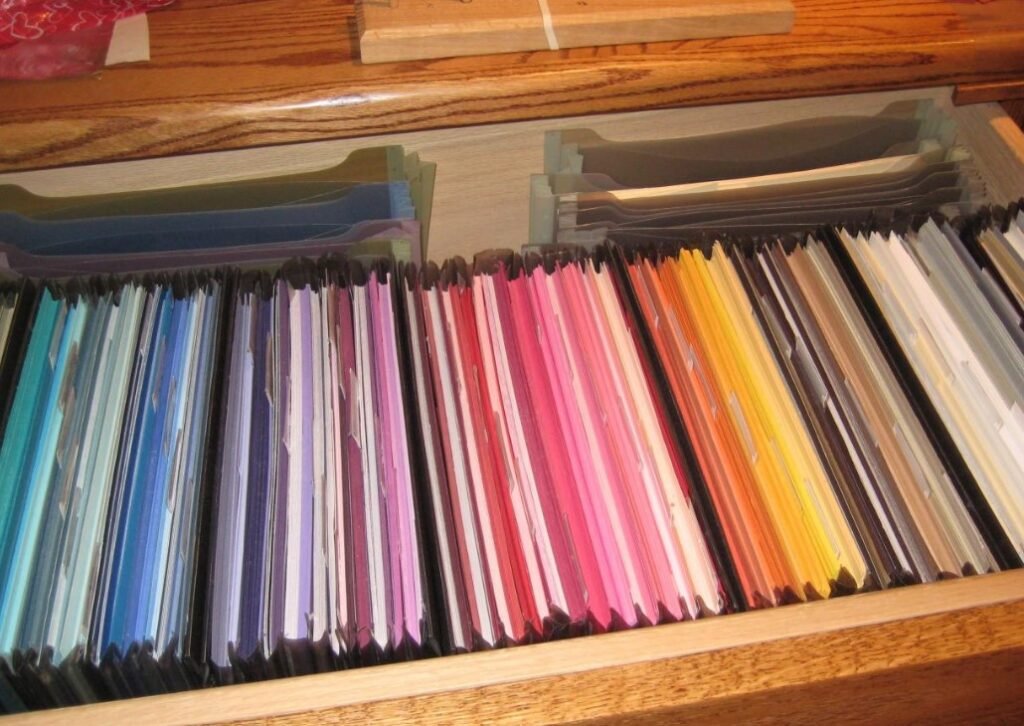
For bigger quantities use some nice sturdy acid-free binders or boxes made for document storage, but make sure they have a good seal on them to keep the dust out. Label each binder or box clearly for quick identification. Also, keep these containers in a cool place that is not too hot because the sun will cause them to fade and wear off over time. Periodically inspect the stored documents and the storage materials to ensure. They are still in good shape.
What Are Paper Storage Systems?
Paper data storage refers to paper as a data storage device. This encompasses writing, drawing, and machine-readable data. Data that is the product of a machine’s operation. Paper Storage systems are filing systems that will hold your 8 1/2 x 11 papers in an orderly fashion, easily accessible, and undamaged. There are many types of systems, all designed to fit different purposes and likings.
Key Components Of Paper Storage Systems
- Filing Cabinets: These are outdated, but they typically have drawers specifically made to hold letter-size, or legal-size paper and everything is in its place and easy to get to.
- Binders: They keep loose-leaf papers, and it’s easy to divide the materials into projects or topics. They come in all sorts of sizes and some even have compartments in them for better organizing.
- Document Boxes: These boxes would make good files to keep important papers for years. They are always made of acid-free paper so the documents don’t degrade and are stackable to conserve space.
- Plastic Sleeves and Sheet Protectors: These hold individual sheets so they don’t get torn or marked up but can still be easily viewed.
- Vertical File Organizers: These are the vertical holding ones that allow easy and quick access to the documents. They are awesome for often referred to papers, they can sit on a desk or shelf.
- Digital Storage Solutions: Not a physical storage system but the new wave of storing things is to scan documents into a computer or cloud service. Not only does this eliminate much of the physical clutter but it also makes it much more accessible, not to mention the backup options.
Need 8 1/2 X 11 Card Stock Storage Opinions
Choosing the right storage solution can make a world of difference in the longevity of your card stock. The first thing you’ll need is something to store them in that will keep the card stock from warping or creasing. keeping your card stock readily available will help your projects flow much more smoothly and enjoyable. Consider the following factors:
- Size
- Material
- Organization
- Accessibility

Opinions on Card Stock Storage Solutions
- Clear Plastic Sleeves: One of those clear plastic sleeve things that everyone uses to keep their 8 1/2 x 11 card stock in. These are clear sleeves where you can see the card stock and it keeps it protected. They are also lightweight and very compact, which is great for storing your card stock collection.
- Card Stock Folders: Card stock folders are another great option for storage. These kinds of folders usually have several pockets or sections so you can organize your card stock by color/ type/ project. Those are very strong and stable; they would protect your card stock very well.
- Card Stock Boxes: These are card stock boxes, kind of old school, but they work pretty well. At least they are boxes made to hold 8 1/2 x 11 card stock, so it doesn’t get warped or anything. They have many different shapes and sizes so you can find one to match your storage capacity.
How Do You Keep Your 12×2 Paper Organized?
Manage in a vertical Cropper Hopper holder thing. You need to create a separator using a strip of paper, stick a tab at the top with the name of the paper written on it, and then add a sticker that coordinates with your colors to the separator.
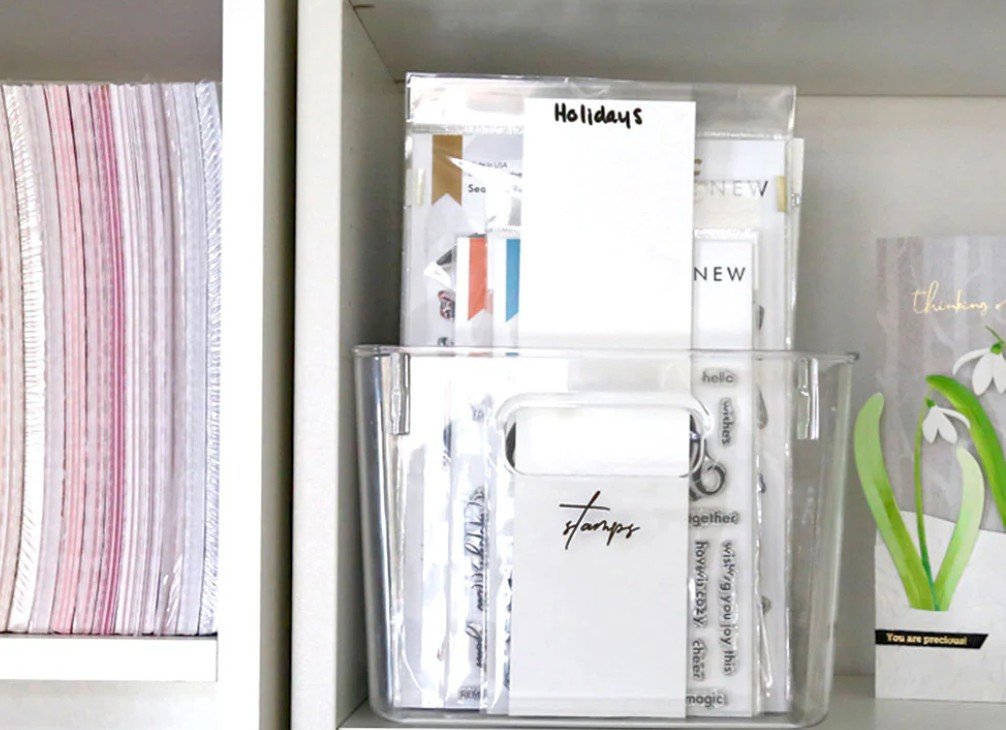
Tips for Organizing Your 12×12 Paper
- Invest in Storage Solutions: One of the best ways to organize your 12×12 paper is to get a storage unit made specifically for 12×12 paper. Think about buying some of those storage boxes, shelves, or racks that are made to store and organize your paper collection.
- Categorize by Color or Theme: It would be beneficial if papers were organized by color or even by theme so that they can be easily retrieved. You can use colored folders, tabs, or dividers to arrange your papers. This will not only help in easy retrieval of the documents but will brighten up the office as well.
- Label Everything: Labeling is key when it comes to paper organization. Be sure to mark every container, folder, or separator with distinct explicit labels. Then you always know where everything is and you don’t waste time trying to find the right paper.
- Use Vertical Storage: Make the most of your space, and store your 12×12 paper vertically. Vertical storage not only saves space but also makes it easier to see and access your paper collection. Some vertical file holders or shelving units might be a good investment to keep all that paper upright and easily accessible.
- Regularly Declutter: To avoid the accumulation of paper clutter, simply develop the habit of periodically decluttering and purging papers that you no longer need. Take an hour out of one day a month and just go through papers and throw away any old meaningless crap.
How Do You Store Your 8.5″X 11″ Photos?
After you place all your pictures on paper or plastic sleeves you can stand them up or lay them flat in a box. But if you stack them flat, be careful not to stack too many pictures in the box because then your pictures at the bottom of the box will be lost. You can store your 8.5″ x 11″ photos With these steps:
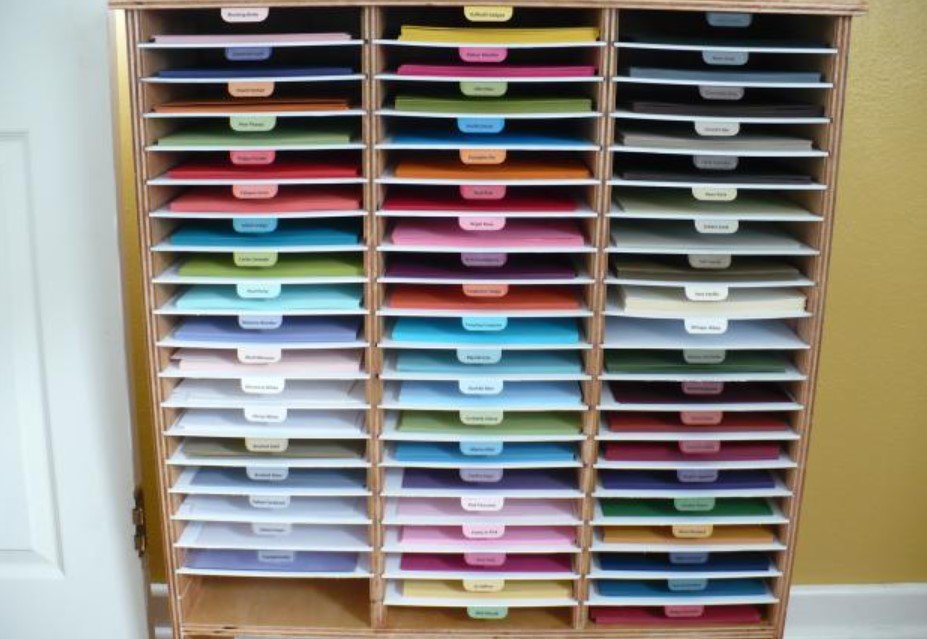
Photo Albums
The old-fashioned photo album is one of the best mediums to hold your pictures and to look at them. Albums that are made to hold 8.5″x11″ pictures with acid-free pages so the pictures don’t get messed up.
Photo Boxes
Photo boxes are good for all those loose photos. Choose an acid-free, archival-quality paper divider box to keep your pictures separate and protected.
Photo Sleeves
Photo sleeves are those clear thingies that put your pics in a binder or album-looking thing so they don’t get messed up. Ensure they are,
- Acid-free
- PVC-free sleeves
So that your pictures do not get lost.
Photo Binders
Photo binders are a convenient way to store your photos in a ring binder. Get binders with archival pages and covers to keep your pictures from being lost.
Cardstock Storage – 8.5 X 11
So, to begin, one has to choose an appropriate and most importantly, a strong acid-free envelope or a drawer specially made for large 8.5” x 11” card stocks. The card stock must be organized. It is ideal to save space and items vertically in a file organizer or a magazine holder. There are important or regularly used sheets, Vaughn them in acid-free polythene pouches to keep them free from dust and fingerprints. Getting ready to fix things into your cardstock storage, be warned against placing anything clad with heavy them, otherwise, your cardstock will eventually shrink or even find creases within it.
When packing materials for shipping, do not forget to pack colored copies for ease of use Finally, store your cardstock in a cool dry place away from direct sunlight and avoid exposing it to excess heat to ensure that they do not get damaged or change color due to melting. Regular banking is advised, and any worn storage materials should be substituted with new ones. By adopting and implementing these measures, your 8.5” x 11” cardstock will be well protected and preserved in readiness for any of your crafting or printing needs.
Where Do You Store Your Larger Sized Printed Photos?
So, if you are wondering How Do I Store Lots Of Printed Photos? Then you are at the right place. To store your large-sized printed photos, select a storage location that is a cool and dry place. You can store photos by using the following steps;
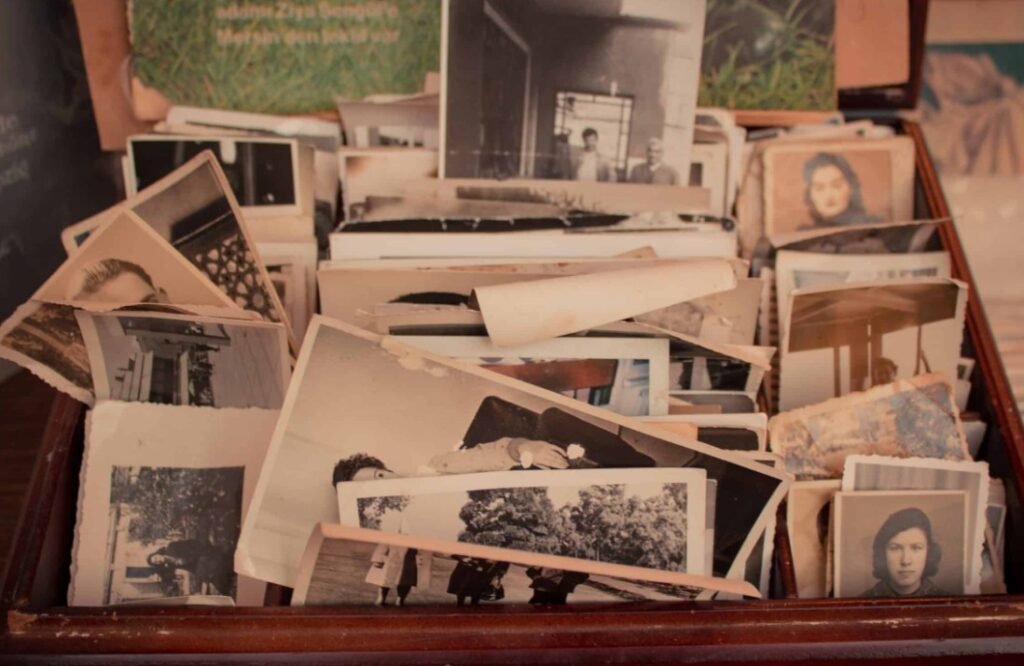
Standard photo albums
Printed photographs may perpetually remain among the most effective means of preserving memories by creating traditional photo albums. These albums usually come with plastic sheets which help keep the photos intact and clean.
Photograph boxes
Photo boxes are also a suitable alternative for keeping or storing larger-sized printed photos. These boxes are anti-squat in most cases and come in many shapes and colors. Photo boxes are an excellent option for people who want their photo collections to be well arranged but do not want bulky photo albums.
Archival Storage Materials
To hamper the loss or damage of valuable or unrepeatable pictures, the pictures in some cases should be stored in archival quality storage materials Archival storage materials are designed to be acid-free and have a neutral pH which ensures that photographs will not yellow or decompose with age.
Virtual Storage
Storing images by printing them, scanning them, and copying them onto a laptop at home or into a portable hard disk or web storage system saves the availability of the pictures at any place from being lost or destroyed.
Framing
The frame protects your pictures from being spoiled and allows you to keep the images in the frame as part of the decor.
What Are The Best Paper Storage Solutions?

Filing Cabinets
Filing cabinets are one of the oldest and most dependable solutions for paper storage. Their availability in various sizes and styles allows easy choice by the space and the organizational requirements.
Document Holders
Document holders serve well in organizing loose sheets which include both papers and receipts. They exist in different forms and shapes which include:
- Accordion files
- Tabletop or desktop holders
- Carrying file boxes
Shelving Units
Shelving units are suitable for setting up one large storage unit for all the documents and help in the vertical filing of the office or the house.
Digital Storage Solutions
Good facilities for keeping and protecting the files stored in digital form are cloud storage, external hard disks, and appropriate computer software for the management of the documents.
Organizing 100s Of Photo Prints Of All Sizes
To properly store and arrange the hundreds of different-sized photo prints, do the following:
- First sort by theme or date: Gather the photos taken during events and on certain dates, or grouped around themes for example holidays or family reunions. This simplifies the retrieval of photographs.
- Photo boxes or binders: Purchase archival quality acid non-reactive safe photo storage box storage dividers or photo binders with protective sheets inside. Name the dividers by the theme, event, or date.
- Size-wise arrangement: it’s a good practice to keep multiple images of one print in a slightly different proportion. Lose small photos among the big ones or squash them. For various print sizes, use pockets or trays with levels.
- Put in Sleeves: For each print used throughout the work and not presented in a boo. Use an inclination-quality plastic archival sleeve to avoid dust and scrapes.
- Clearly Label: Clear labeling of boxes, albums, or dividers along the corresponding themes or dates will go a long way in prompt retrieval. For instance, indentations can be added if binders are used for inner pages or sleeves of the binder.
- Store in a Cool and Dry Place: Avoid very bright light where the prints could easily be affected. where there is dampness and humidity or any extreme temperature conditions to avoid spoiling the photo prints.
What’s The Best Way To Preserve And Store Tiny Print Photos?
Employ properly labeled, IFRA-approved, non-acid vinyl sheet. Insert them into the folder placing the sleeves. that they flatten out the solders (out curling).
The best way to preserve and store tiny print photos is to keep small print pictures unbent and in good condition involving hands that perform the work with utmost care. Some materials are designed for the long-term preservation of documents.
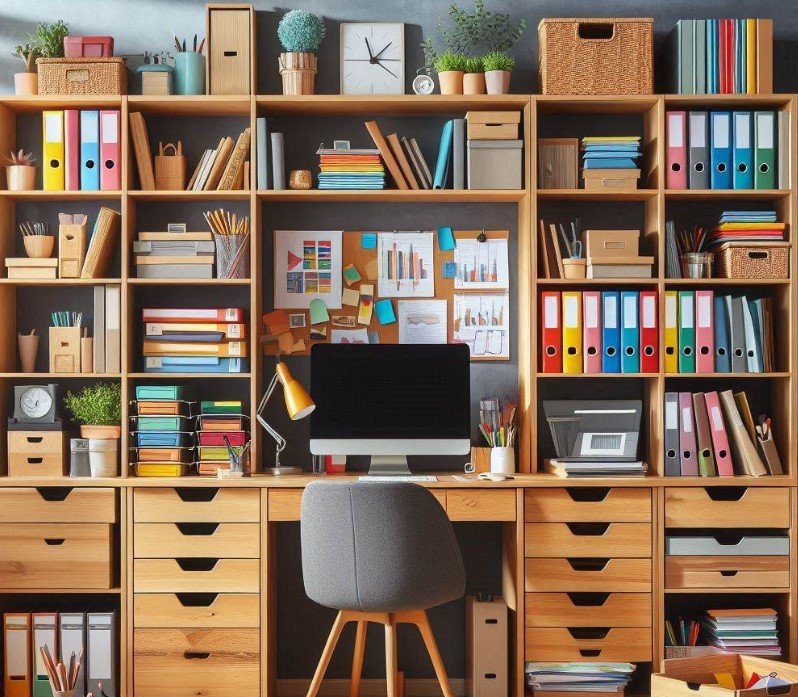
First, acid-free photo albums with plastic covers that do not contain PVC resins which could harm the pictures are better organized and protected from chemical wear. Remember to interleave with individual parts acid-free tissue paper to avoid sticking together or rubbing off between the prints.
Consider converting your small prints into digital copies by scanning them. In this way, useful digital copies are preserved and the original copies are kept from excessive wear and tear by careful handling. Careful packing and hiding away your small-sized photos in good condition and the appropriate climate ensures. They last longer and remain as they were intended to.
How Do You Store/Organize Your Prints And Negs?
If you are determined to sort and organize your negatives, the most efficient way to store negatives would be to keep them in plastic negative sleeves. that are free from PVC compounds and in chronological order within a three-ring binder. This keeps them safe from dirt, scratches, and skin oils. To begin with, acid-free storage boxes or albums meant for photographic materials must be used to prevent any damage to the photographs. Every box or sleeve has to be labeled mentioning the date, location, and content inside it for future reference when searching for particular items.
It will also ensure that the storage conditions of all the photography materials in the collection remain optimal for a long period. Re-evaluate the organization and storage of the collection at regular intervals to plan for any new developments and maintain professional management of your prints and negatives.
How To Organize Your Printed Pictures?
If you are managing and arranging your physical photographs, there are some steps you take.
- First, buy some big photo boxes so your picture prints are safe.
- Next, go through the prints and organize them chronologically. You can set them by year or events, and keep any extras for getting rid of.
- You could also create a contrasting framed arrangement of your best photographs on a wall.
Here is a quick overview of how to do it:
- Buy large photo boxes for storage purposes.
- Arrange and classify the prints either chronologically or according to events.
- Keep some copies aside for elimination.
- Design a special photo gallery wall with your favorite pictures.
What Is The Best Way To Store Large Sheets Of Paper?
- Always store paper in its original packaging until ready for use: A moisture-proof, polyethylene plastic-lined wrapper encloses the paper. Whenever possible, unopened paper packages, place the re-packed bags back inside the original box.
- Store paper in a storage cabinet or flat shelf: Place any excess paper in a storage cabinet that is flat and dry to prevent damage to the external environment. When resting the paper reams, they should always be placed evenly on top of each other without any bulging angles to prevent over-curling or bending.
- The storage location should be climate-controlled: The storage area should be maintained at either 68°F/20°C – 76°F/24.4°C or 35-55% relative humidity for optimum performance.
- How Do You Store Printed Paper? For instance, a carton of paper that has been standing in the storage room at 57.2°F/14°C, and moved into the production room at 72.5°F/22.5°C, must stand for conditioning 8 hours before usage. The time of conditioning will depend on the temperature gap.
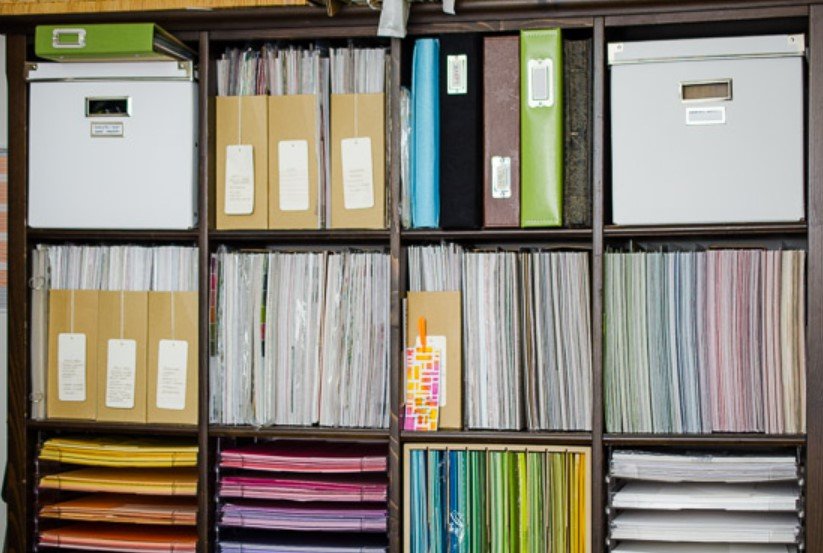
How To Preserve Photo Prints?
To prevent distortion, keep all oversized photographs in flat storage. Effective storage for photographs entails an environment with cool and dark conditions free of moisture and a controlled humidity and temperature range. Places with high instability conditions, like extreme temperatures such as sheds and garages, roof spaces, and even basements are not appropriate. It is more convenient to keep photographs at the core of the building since the temperature can vary in lower ranges.
Enameled steel filing cabinets are best suited for maintaining prints and negatives. One has used filing cabinets, examine them for any rags of rust and remove them. Metal cabinets and enclosures should be lacquered, painted, or varnished to prevent the emission of solvents that are damaging to the images within the film and print. Utilize archival materials that contain no lignin and have passed the Photographic Activity Test (PAT) for storage.
Conclusion
In the end, if you are searching Best Way To Store Printed 8 1/2 x 11 Pages. The main principles of keeping 8 1/2 x 11 papers are proper arrangements and adequate protection. With the above steps and given information you can easily solve this problem. It does not matter if it is a corrosive-resistant box, acid-free sheet protectors, or a filing cabinet with hanging folders, when hard-copy documents are taken care of, they can be preserved and used for many years.
Frequently Asked Questions
What materials should I avoid when storing my documents?
It’s best to avoid acidic materials, such as regular paper, cardboard, or plastic that can cause deterioration over time.
Is it necessary to use a climate-controlled environment for document storage?
While not always essential, keeping your documents in a cool, dry, and dark place can significantly enhance their lifespan.
How can I tell if my storage materials are acid-free?
Look for products specifically labeled as “acid-free” or “archival quality,” as these are designed to protect documents from degradation.
Can I use regular binders for storing important documents?
If using binders, opt for acid-free sheet protectors to prevent damage to your documents.
How often should I check on my stored documents?
It’s a good practice to review your stored documents at least once a year to ensure they remain in good condition and to address any potential issues.
